Startups have a lot of decisions to make when it comes to their business. One of the most important ones is choosing a CRM (customer relationship management) system.
HubSpot and Salesforce are two of the most popular CRM systems on the market. Both offer a wide range of features, but which one is the best for a startup? In this blog post, we will compare HubSpot and Salesforce and help you decide which one is right for you.
HubSpot Vs. Salesforce: Which One Has The Best Characteristics?
Overview
HubSpot
HubSpot’s platform is based on the concept of Inbound Methodology, a method that encourages long-lasting customer relationships. It is great for small businesses looking for affordable all-in-one solutions. HubSpot’s cloud-based CRM software helps startups track and nurture leads and analyze business metrics to build a seamless digital experience for their customers.
Salesforce
Salesforce CRM is considered the most trusted platform for businesses of all sizes. It helps businesses conduct and monitor marketing campaigns, manage customer accounts, track sales leads, and provide service post-sale. Automating these tasks lets businesses focus on more important ones.
Ease Of Use
HubSpot
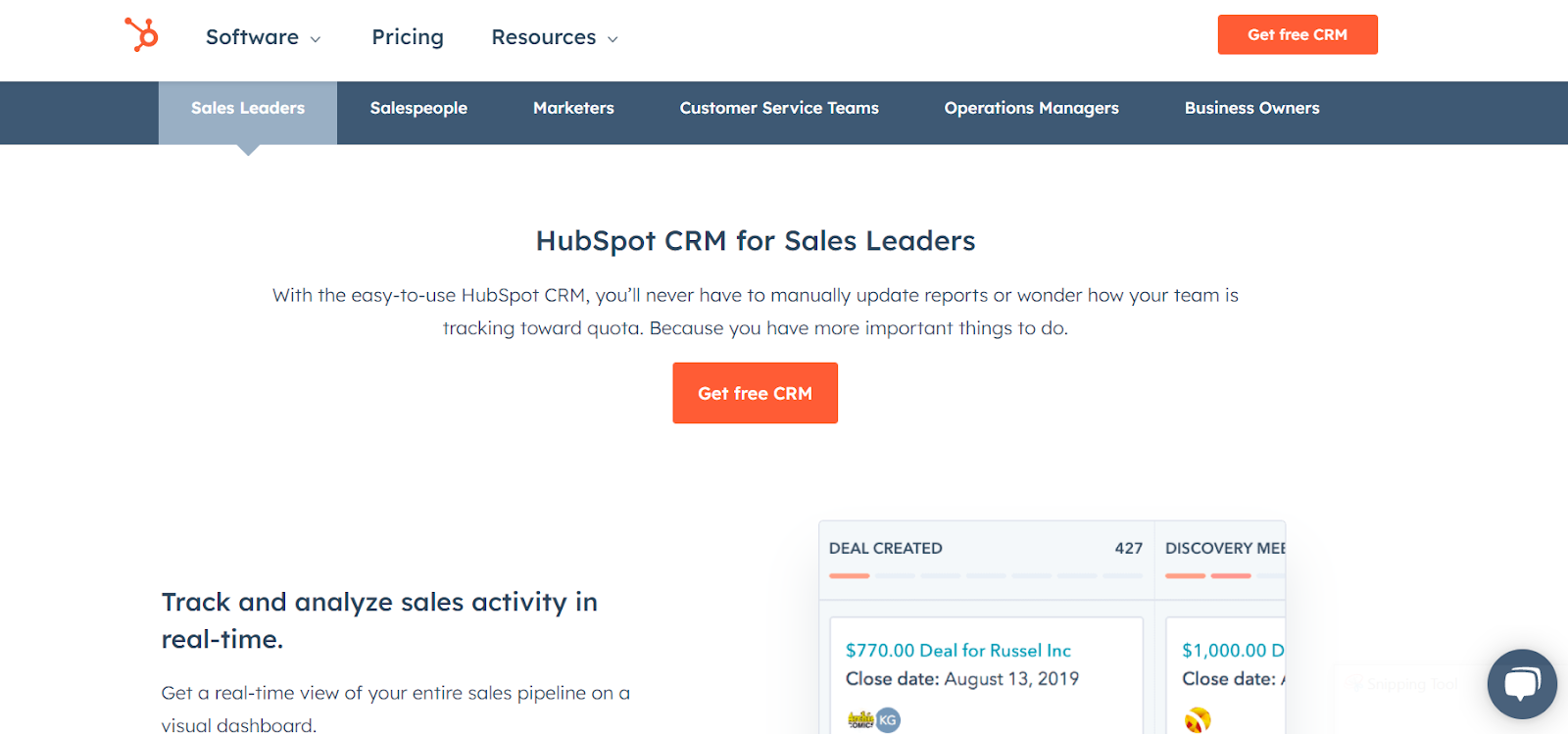
With a user-friendly and intuitive interface, combined with a clean, simple web layout, startups with no prior CRM experience will find Hubspot’s CRM easy to navigate.
Creating a seamless interface while portraying the true meaning of your brand isn’t that easy, but HubSpot still managed to do it, how? Hiring TheUserIsDrunk.com, is a pretty brilliant idea, you might agree. Just a few drinks, and you have yourself a drunk critique with pretty useful ideas. We think it’s safe to say that if a drunk user can navigate Hubspot, anyone can.
Unlike Salesforce’s platform, it portrays the key data to the HubSpot users in a minimal way, making it easier to comprehend.
Salesforce
A CRM interface should be minimal and clean. While Salesforce might be taking the lead in giving us a huge feature catalog, it also makes the user interface crowded. This CRM platform is complicated and cluttered, making it hard for people to work on it initially.
The Winner
It’s a close call, but in the battle of usability, we think Hubspot just takes the upper hand, owing to its nice clean interface.
Automation & AI
HubSpot
One of the main ingredients for a startup’s success is automation, which lets you streamline certain tasks and do more. Regarding email marketing automation, HubSpot has great workflow automation that is also customizable and personalizable.
It allows you to set up workflows for internal notifications, sending leads from marketing to sales, and lead scoring. But the options are limited, and there is less functionality flexibility.
Salesforce
Owing to a wide range of marketing automation tools, Salesforce has the edge over HubSpot. Its marketing automation delivers customer insights and predictions through emails, website visits, socials, etc. This helps create a 360-degree view of your startup’s customers.
Moreover, it helps
- Generate more leads using email marketing, custom landing pages, lead capture forms, and a central marketing dashboard
- Create personalized touchpoints
- Measure and optimize the startup’s performance with closed-loop reporting.
Salesforces SaaS Pardot is a great tool for startups looking to reach their segmented audiences and automate sales funnels.
The Winner
Salesforce has won all the points in this head-to-head. It automates most of your tasks, giving you the time to focus on more important tasks.
Scalability
HubSpot
HubSpot software solutions are optimized to enable scalability for startups. It focuses on an easy-to-understand design and an interface that smooths the learning curve for newcomers and marketing experts. Later as the workload grows, HubSpot can handle it. HubSpot’s CRM solution is an ideal scalable solution for startups.
Salesforce
Salesforce was created with large businesses and enterprises in mind, and over time it evolved to cater to startups as well. In terms of service, Salesforce designed its CRM with scalability in mind, and the service was designed to handle the largest teams and millions of users.
The Winner
The cheaper version of Salesforce offers more functionality than HubSpot; thus, Salesforce offers more scalability.
Onboarding Process
HubSpot
HubSpot’s onboarding process is easy to navigate right off the bat and has everything laid out. The Hubs all have a dropdown menu displaying their top features. Clicking on it, you’ll see all the features, i.e., one included in your plan and unlocked ones, which you can use if you upgrade.
Moreover, HubSpot also offers Onboarding Plans. It helps to customize and configure HubSpot according to your startup’s needs. Moreover, it gives you several training sessions on how you can use it to reap maximum benefits.
Salesforce
Salesforce’s onboarding is slightly confusing. The main reason for it is the numerous tools available, and users have complained about navigating the site.
Salesforce customer support depends on your subscription. Their Premier Success Plan charges 30% of your net license spend, providing 24/7 live and global phone support and access to Salesforce-certified experts, success programs, and enhanced support. This means the higher your total cost, the higher the Salesforce customer support plan percentage.
The Winner
A startup can easily settle in and get familiar with whole HubSpot system. It has Onboarding Plans, which can be customized as a person sees fit.
Customization
HubSpot
While HubSpot takes the win in usability, it lags in customization and is good but not user-friendly. To customize HubSpot according to your startup’s needs, you would need a developer with coding experience.
Salesforce
Salesforce has a massive library of powerful integrations. It can be customized without using codes but only a simple drag-and-drop interface. Being a startup with limited monetary resources, Salesforce can empower your team to design their solutions without needing a coding expert.
The Winner
Startups can easily customize features using tools provided by them, whereas, to customize in HubSpot, you need a developer or coding experience.
HubSpot Vs. Salesforce: Which One Has The Best Features?
Analytics And Reporting
HubSpot

Analytics and reporting tools are great for forecasting sales, pinpointing any weaknesses, and helping improve those. HubSpot and Salesforce both offer a lot of reporting and analytic tools. But HubSpot’s many tools are available in their expensive plans.
Its Free or Basic plans only allow you to view revenue data. The more helpful tools like sales forecasts and custom reports are in their expensive plans.
Salesforce
The good quality business decision regarding reporting tools is Salesforce. It has two famous tools,
Tableau; gives you industry-leading analytics.
Einstein AI; builds custom predictions and recommendations with a click of a button.
The tools allow you to build real-time reports and charts to visualize key business metrics. Moreover, with Salesforce, you wouldn’t need an IT department! The CRM’s analytics tool keeps you updated with customized sales forecasting reports that you can build with a simple drag-and-drop feature.
Marketing Features
HubSpot Marketing Hub
What makes a marketing tool valuable? Only if it improves efficiency, helps maximize a marketer’s time, and integrates with the rest of the company’s tech stack. The marketing Hub offers endless tools for marketers from all experience levels and company sizes. It offers the following features,
- Allows startups to make better, informed decisions around their leads, customers, and prospects.
- Spins landing pages up in no time
- Makes creating assets for lead capture an easier process
- Segments and makes a list of customer databases based on your given criteria
- Has an email automation platform for sending bulk emails
On top of that, HubSpot Marketing Hub has an ad-integration feature that allows marketers to analyze their Linkedin, Facebook, and Google Ads performance.
Salesforce Marketing Cloud
Salesforce has a huge array of marketing tools. This allows startups to do everything from email marketing to cross-channel campaign management. It is a rich ecosystem with solutions to all types of marketing challenges. Following are the key features of Salesforce Marketing Cloud.
- Omnichannel Communication; It allows you to easily automate marketing channels such as email and SMS in one place using Salesforce’s Mobile Studio, Data Studio, Social Studio, Email Studio, and Advertising Studio.
- Has a Behavior Tracking System that helps you coordinate online and offline customer experiences.
- Datorama; brings together the data across all integrated sources and presents it in a single-view dashboard.
Sales Features
HubSpot Sales Hub
Salespeople spend 66 percent of their time focusing on other tasks leaving behind only 34 percent selling their products and services. HubSpot Sales Hub has great sales analytics features that can allow you to solve this problem and save you loads of time so you can focus on other important tasks. HubSpot’s CRM, its Sales Hub, is much more user-friendly than Salesforce’s Sales Cloud.
HubSpot Sales Hub allows you to never miss a lead with the help of their sales automation. It helps you to collaborate better with the data collected and track progress for every account in real time.
Overall, it is famous and a great asset to the CRM platform. One thing that moves users away from this Hub is its high license price. To fully support your sales and marketing teams, it can get quite expensive. It also has a mobile version available, but users have reported bugs and incorrect analytics and reporting.
Salesforce Sales Cloud
It helps manage the end-to-end functioning of a sales department and provides full-fledged digital workplaces for everyone in the department. The Cloud has sales tools that provide access to thousands of applications and incorporates lead generation, customer service, marketing, sales, and business analytics. It will create a well-structured sales process and brings your sales more value. Moreover, it helps the sales team project a business’s marketing programs to generate better revenues.
Unlike HubSpot’s Sales Hub, which is liked by sales teams for its friendly UI/UX initiative interface, Salesforce’s Sales Cloud is overly disliked by sales reps for not having a user-friendly interface, making their job more burdensome. The solutions given by the Sales Cloud can sometimes be difficult for customers to understand.
Service Features
HubSpot Service Hub
The Service Hub provides tools to connect with customers and turn them into promoters that grow your business. Some of its key features include
- Tickets; Customer issues are logged as tickets. They are assigned, organized, prioritized, and tracked at the main location.
- Conversations; 1-to-1 customer communications through a collaborative inbox.
- Feedback; Helpful to build a better customer experience by conducting surveys.
- Conversational Bots; Use of bots to improve chat efficiencies. It also routes customers to relevant documentation or the appropriate chat agent.
The amount of customer support you get depends on your subscription plan. Users using their Free and Starter Plan only have chat and email support access. The 24/7 phone support is only available to businesses having Enterprise or Professional Plans.
HubSpot’s Service Hub starter plan is more expensive when compared to Salesforce’s Sale Cloud. Moreover, users’ ticketing functionality is limited, and notifications on closed tickets are missed and can’t be reopened.
Salesforce Service Cloud

The Service Cloud is built on Salesforce Customer 360 (an integrated CRM). It’s further divided into customer service, field service, and employee service. Its features involve,
- Highly Customizable; Startups can tailor queue/report/dash to their specific need.
- Sales reps can easily interact with customers inside the CRM without needing to integrate with external tools.
- Keeps Accounts and Contacts well organized, giving a great view of the activities.
- Has tons of plugins for software like Aha!, Azure DevOps, call center, and chat platform
On the flip side of Service Cloud, the design of the interface is very text-heavy, and it isn’t very colorful either when compared to the Service Hub. Moreover, sometimes navigating around it requires the help of a tech-savvy person, and it takes multiple clicks to get anywhere on their Service platform.
HubSpot Vs. Salesforce: Comparison Chart
| HubSpot | Salesforce | |
| Ease of use | (4.5) | (4) |
| Features | (4.5) | (5) |
| Customer Support | (4) | (3.5) |
| Value for money | (3.5) | (4) |
| Functionality | (4) | (4.5) |
| Pricing | Free – $3200/month | $25 – $1250 |
| Pros | Powerful segmentation options Easy lead generation Straightforward drag-and-drop emails and landing pagesPowerful automation User-friendliness and ease of usability | Extensive customization options Compatible with all browsers in use today. Powerful automation and reporting Integrations with over 1,000 other platforms |
| Cons | CRM is not as configurable as other solutions Lacks personalization features and good reporting Limited “templates” to help you get started with automation | It can get expensive and some of the functionality isn’t very customizable Complicated interface and setting it up takes time Too expensive for startups to use |
Conclusion
Startups have a limited budget which they have to make the most of. HubSpot CRM is perfect for startups in this case. Although it offers less area to work as compared to Salesforce, Its functions and features are more than enough to get started.
Moreover, the interface is user-friendly with a far less intensive learning curve. It offers well-rounded marketing and sales features at a great price (even free!)
Need to test it out yourself? Give Salesforce’s free trial and HubSpot’s free plan a look and see what works for you!

